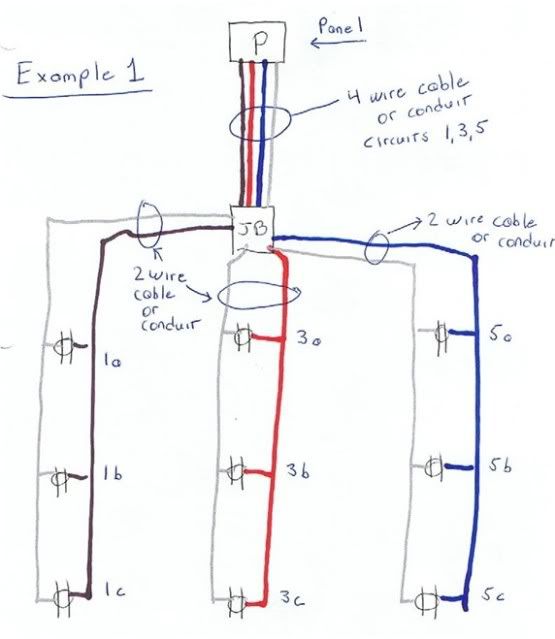LarryFine
Master Electrician Electric Contractor Richmond VA
- Location
- Henrico County, VA
- Occupation
- Electrical Contractor
I do.I don't think the purpose was no current in the neutral.
Then you no longer have MWBC's, because once the neutral is separated (as it would have to be to follow the hots), you can't recombine it.If you're worried about multi sources in the box, put the switches in seperate boxes.
I would like to start a pole, how many of you would install snap switches after the handle tie breaker on a multi wire bcs. ??
Same for installing the snap switches. :wink:It's a waste of labor and materials and it serves no useful purpose.
Perhaps even more ironically, the existing wall light switches function exactly that way now.. . . installing switches down stream of the OCPD will at least allow someone to turn off a part of the MWBC.
Like the switch by the door to the room? Ironic.The switches do not have to be at the panel, I could strategically place switches ... at the entrance to rooms, etc....
... a disconnect for the one leg or phase insight of say fixtures that it serves would actually be code compliant.
Seriously, why do the existing switches not qualify for that now. Would two switches in series be okay? How far apart would they have to be?
Agreed.The problem I have with this rule is, a qualified person looking in a box with one neutral and more than one ungrounded conductor would have high suspicions that the neutral could very well be carrying current from the ungrounded conductor that is still on and would not open this neutral until he / she was sure that both were shut off.
Agreed.BTW, I should clarify that we do not do residential and I don't have a problem with the rule in residential settings.
I believe the intent was to install the handle-ties as required, and then install single-pole switches to allow individual circuit de-energization.I never stated you cannot install switches. What I said was you cannot install the switches and think you do not have to install the two pole breaker on the MWBC. These posts always seem to get away form the OP's questions. Now if you install a 2 poll switch at the panel and run both ckts to it you may be able to convince the inspector you met the intent of the code. But the intent of the code is to turn off BOTH ckts so you wasted time and money on the DP switch.
Last edited by a moderator:


